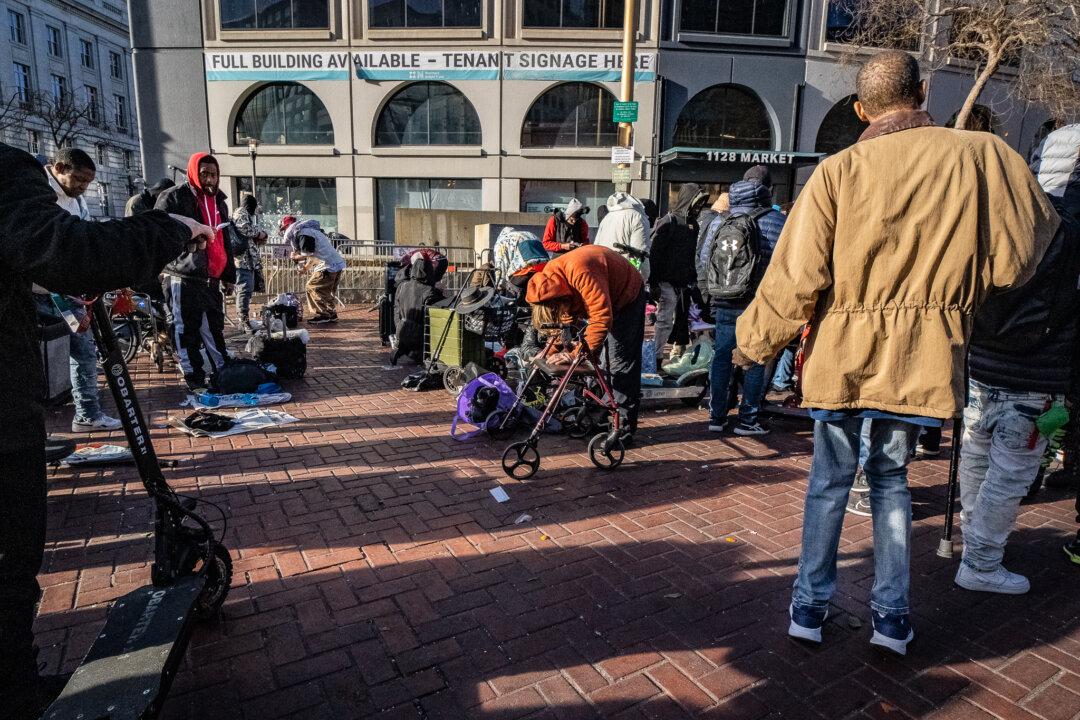LOS ANGELES—In a fenced compound in the heart of the San Fernando Valley sits a young woman wearing a black mask covered with gold-glitter butterflies.
The compound, on Chandler Boulevard in the North Hollywood neighborhood of Los Angeles, opened last month on what used to be an overgrown, empty lot. Now, the lot is lined with 39 red, white, and blue sheds—and the young woman calls one of them home.





